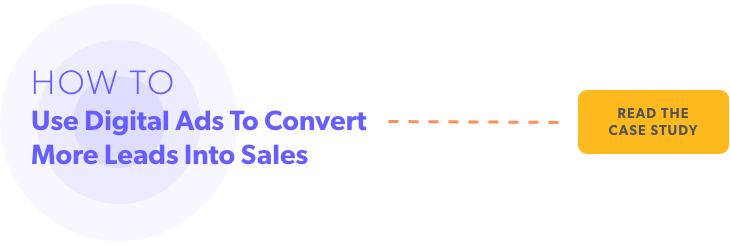Pay per click (PPC) campaigns can be tricky. At first glance, it seems like it should be simple: you create some ads, target some specific people and then wait for the results. Right?
The reality is that you should always have goals in mind before investing in ads. You wouldn't invest in the stock market without a plan, right? The same is true for investing hard-earned money into ads for your business. Know why you're doing it and don't ever "set it and forget it." There's too much at risk.
To ensure better results and optimize spending on paid search marketing, you need to start by setting SMART goals.
What are SMART Goals in Marketing?
What are SMART goals, anyway? By learning what they are and how to set them, you will know if your investment is worthwhile.
'SMART' stands for:
- S – Specific – clear and well-defined goals that help plan your campaign.
- M – Measurable – goals that contain amounts, dates, and other measurable parameters to help you evaluate the success of your PPC campaign.
- A – Achievable - goals you set must be achievable. Don't try to jump over your head or you'll be biting your elbows. (FYI: Average human beings can't reach their elbows with their teeth... Did you try???)
- R – Relevant – goals must be relevant to the direction your marketing campaign is taking.
- T - Timely– goals should have clear deadlines to help you stay on track. You can set milestones to make sure the campaign is working properly toward achieving the final goal.
 An Example of a Smart goal
An Example of a Smart goal
An example of a common goal that we hear from our clients is, "I just want to increase traffic to my website." As you can see, this doesn't tell us much. After all, technically, if I increase traffic by 5 people over the next year then I've done my job. But who is going to be happy with that? No one!
For our clients we start with a goals and strategy session to learn more about overall business goals and current lead generation. From there we can create SMART goals for a client's PPC campaign. Here's an example:
- SMART goal: At the end of 90 days, I would like to see a 10% increase in traffic to our website by spending $1,000 per month on Google and Bing paid ads.
Let's take a look how this SMART goal breaks down:
- Specific: We want to increase our website traffic using $1,000 of ad spend with Google and Bing per month.
- Measurable: A 10% increase in traffic to the website.
- Achievable: Historically the website has an average traffic increase of a 2% per month. We need to maintain that 2% plus gain additional visits via paid ads.
- Relevant: By increasing traffic to the website through targeted ads, we are able to bring more of our ideal customers to the website to generate more leads for the sales department.
- Timely: 90 days
What's the Big Deal About SMART Goals for Ads?
Having a tangible target in mind by creating a SMART goal makes it known within your organization that you're aiming to achieve something specific. And because of this, you're going to be carefully watching how your ads perform, making adjustments as you go. You might need more relevant content on the website to share with visitors if they're not sticking around. Maybe you need to change up the key phrases you're targeting. Some can be pricey and sometimes you're targeting a key phrase that's getting clicks but not leads. It's a process that takes time to hone.
Related Read: Paid vs. Organic Search: What's the Difference?
By using SMART goals you're more likely to achieve success because you've set a target.
How to Set Measurable Goals for Your PPC Campaign
Measurable goals take the uncertainty out of the equation and give you numbers to work with. By the way, if a goal is measurable, it doesn't mean it shouldn't also be specific, achievable, relevant, and timely. If you take one letter out, your goal isn't SMART anymore.
When it comes to measurable goals, they should be as specific as possible. Take advantage of numbers. For example:
- 100 new website visitors per day
- 200 new leads per month
- A 4% conversion rate from visitor to lead
1. Increasing Website Traffic
It's easy to measure how well the PPC campaign is doing by reviewing the website traffic. Be sure you know what to expect for the number of clicks to your website based on your industry. The average click through rate is around 2% but you can blow that out of the water if you use the Google Ad tools to the max. If you notice you have a lot of impressions but not a big enough bump in traffic it's time to evaluate the ad text. If you see visits but they leave immediately, you need to reassess the content on the page you're sending them to!
2. Increasing Leads or SALes
You can set a SMART goal to generate more leads or sales. It's very easy to determine which leads and which sales were the result of an ad click using ad conversion tools. This type of proof will be important for future funding of more ads.
You can find out which keywords are generating more conversions than others. Once you figure it out, you can invest more money in ads that feature higher-efficiency keywords.
If you're aiming for increasing leads, give the visitors plenty of opportunity to become a lead. Don't hide the calls to action!
3. Increasing Return on Ad Spend (ROAS)
If you want to tweak your marketing campaign, one of your measurable goals could be increasing the amount you earn for every dollar you spend on ads. AdWords have an excellent feature that shows how much each of the conversion costs you. By setting the right goal, you can improve the profitability of your campaign.
Setting Achievable Goals for Your PPC Campaign
Setting achievable goals can be complicated especially if you set unrealistic expectations. For example, with a low budget, doubling website traffic is virtually impossible, especially if the average cost-per-click on your ads is high.
So be realistic. Here are a few tips to help you.- Evaluate the progress of your PPC campaign over the past few months. If you are seeing a 10% increase in conversions, setting a goal to achieve a 30% increase in the next two months is an obvious mistake.
- To start, choose one big goal and three small goals. Anything bigger could get you off the track.
- Set small goals and see how they work out to determine how achievable bigger goals are. Frequent checking of the PPC campaign metrics can help you figure out how much you can achieve in the future.
- Don't rush to overhaul the entire campaign if you fail to achieve one goal. Take it as a lesson and do some goal setting tweak work.
- Don't let your short-term goals kill your long-term prospects. Set small achievable goals with the campaign's future in mind. For example, you don't want to drive thousands of users to the website only to have the bounce rate go through the roof.
It's Never Too Late to get SMART

Are you achieving goals consistently? Even if your paid search marketing campaign is already in full swing, it's not too late to make changes. In fact, we recommend that you make changes pretty regularly to get to your goals! Review any goals you set at the start and make sure they're SMART. And if you didn't have any goals just yet, it's not too late to create them!
If you're not sure what your goals should be or would like some help with getting your PPC ads to work as a part of your inbound marketing program for lead generation, let us know. We can schedule a free consultation to see what we might recommend for you.
March 10, 2020




